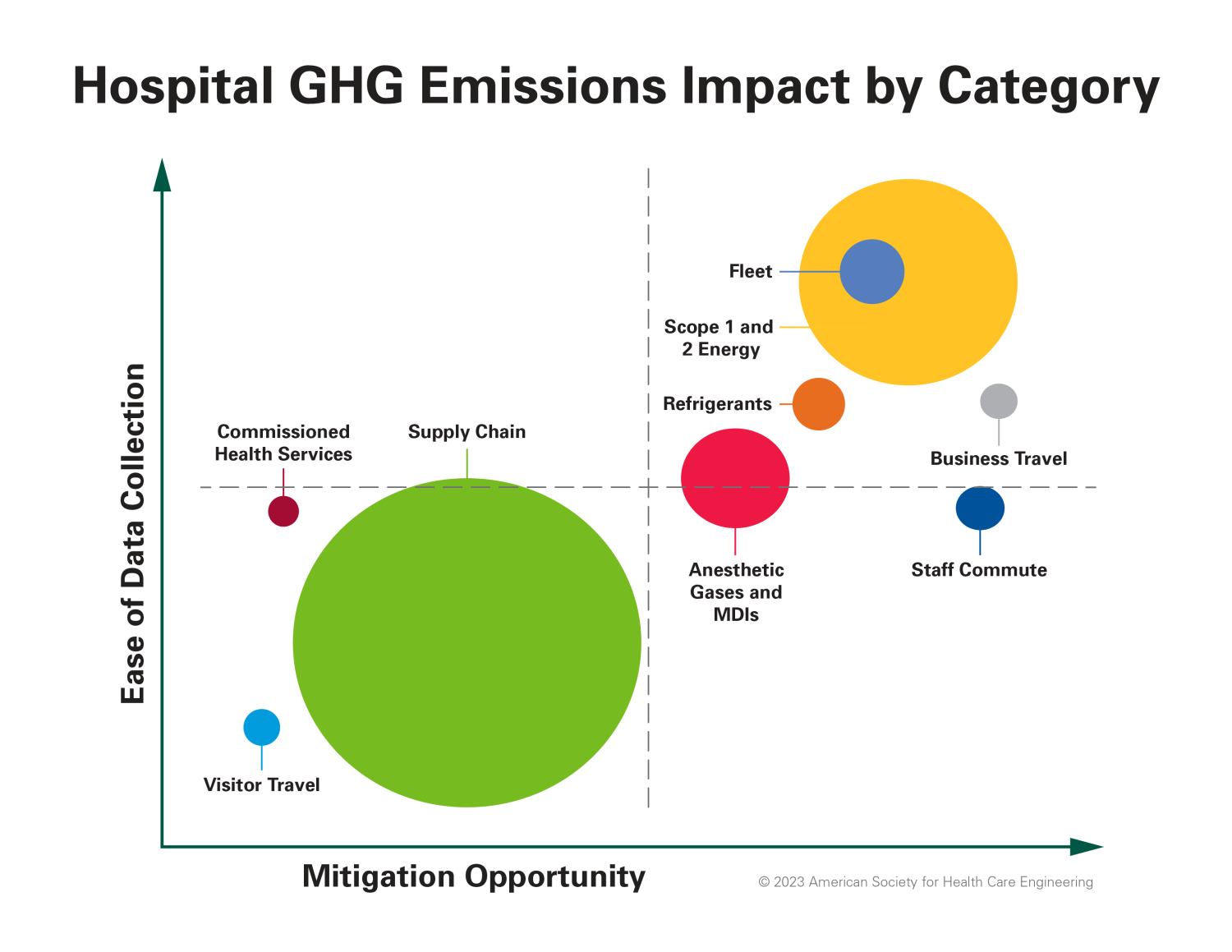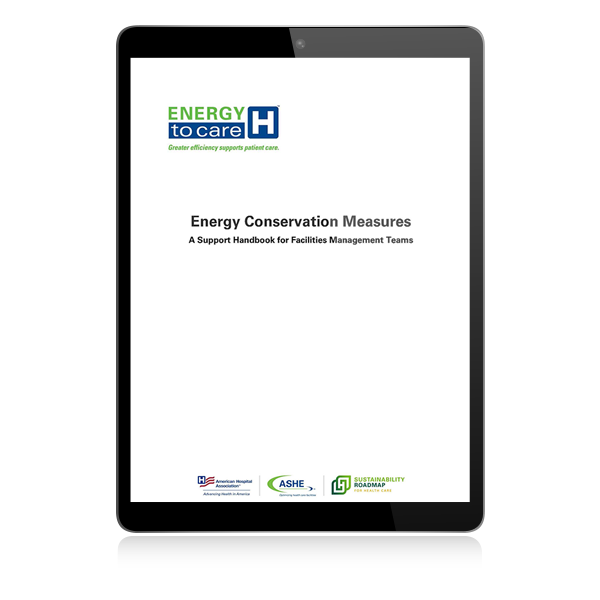
Healquest

Decarbonizing Health Care Facilities
ASHE's position on decarbonization in the U.S. health care footprint is an important and necessary step to mitigating the effects of climate change. ASHE supports the decarbonization of health care and is dedicated to leading the field by providing tools and resources to both reduce the health care carbon footprint and to inform public policy. ASHE intends to advance thoughtful approaches to climate change that take into consideration the unique regulatory environment within which hospitals and health systems operate. ASHE is dedicated to help health care organizations to become more sustainable by adopting environmental, social, and fiduciary practices that support healthy, equitable, and resilient environments and communities.
Discover Emissions Sources
State and Local jurisdictions across the US are setting environmental sustainability and decarbonization goals and targets for commercial buildings. Buildings, including health care facilities, are being held accountable for tracking their energy consumption and greenhouse gas emissions. This chart displays hospital specific emissions as they relate to departments.
Scope 1 Direct emissions emanating directly from health care facilities and health care owned vehicles.
Scope 2 Indirect emissions from purchased energy sources such as electricity, steam, cooling and heating.
Scope 3 Emissions derived from health care supply chain through the production, transport and disposal of goods and services.
- Water Embodied Carbon
- Building Product/Supplies Embodied Carbon
- Patient Transportation
- Visitor Transportation
- Staff Transportation
- Vendor Transportation
- Equipment Embodied Carbon
- Supplies Embodied Carbon
- Waste
- Pharmaceuticals Embodied Carbon
- Food Embodied Carbon
- Investments
- Emissions of Outsourced Services
Hospital Specific Emissions by Department
- Facilities
- Transportation
- Procurement, Clinicians, Clinical Engineering
- Environmental Services (EVS)
- Pharmacy, Procurement, Environmental Services (EVS)
- Dietary
- Treasury
- All
Emissions Impact by Category
Emissions impact by category related to the data available and the opportunity to mitigate emissions. Items in the upper right quadrant are things we can do now. The data is relatively easy to collect and the mitigation opportunities are significant. Those in the lower left are a bit more difficult to tackle. The health care field is embracing desiloing and tackling their emissions categories.


Greenhouse Gas Management
Browse the different areas of your health care facility where you can measure, report and manage your Greenhouse Gas Emissions from a variety of sources.
...of Refrigerants
Refrigerants are used in a variety of applications by health care organizations. Applications include heating, ventilation and cooling (HVAC) equipment; direct cooling equipment for imaging equipment etc.); refrigeration cases; kitchens; and drug storage.
Learn More...of Fossil Fuels
Most hospitals use combustion to convert various fossil fuels — usually methane, propane and diesel fuel — into other forms of energy, primarily heat and electricity. Heat generation serves three kinds of needs: certain end-use process loads, domestic hot water heating and space heating, including reheat.
Learn More...of Water
Water usage in health care organizations is a less obvious source of carbon emissions. In the health care physical environment, water is used for indoor plumbing, irrigation, process heating and cooling, and the heating, ventilation and cooling (HVAC) system.
Learn More...of Anesthetic Gases
Emissions of inhaled anesthetics compose up to 5% of an acute health care facility’s Scope 1 and 2 emissions and more than half of the total emissions from perioperative services.
Learn More...of Landscape and Similar Equipment
This category of emissions includes fossil fuel-powered equipment that is not related to transportation or building operations, but to other tasks performed by health care organization staff.
Learn More...of Embodied Carbon in Building Materials
Embodied carbon consists of all the greenhouse gas emissions associated with building construction, including those that arise from extracting, transporting, manufacturing and installing building materials on-site, as well as the operational and end-of-life emissions associated with those materials.
Learn More...of Emissions from Purchased Energy
Carbon emissions associated with energy use are often a mix of on-site fossil fuel usage and off-site emissions from regional utilities. When evaluating a building’s or campus’s present-day carbon footprint tied to energy use, assessing the impact of carbon emissions associated with purchased energy can be complicated.
Learn MoreAddress Your Emissions Head On
This FREE resource from ASHE: "Energy Conservation Measures: A Support Handbook for Facilities  Management Teams" can help your organization integrate sustainable practices into the health care environment.
Management Teams" can help your organization integrate sustainable practices into the health care environment.
Energy Gap Analysis Tool
ASHE members can use the Energy Gap Analysis Tool to assess where their organization stands on adoption of the most common energy conservation measures. This tool is solely focused on energy, not all Energy Conservation Measures.
